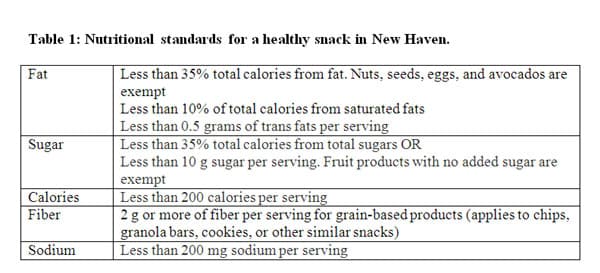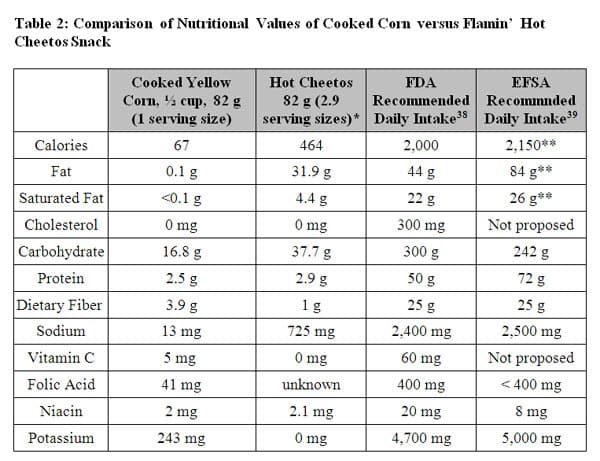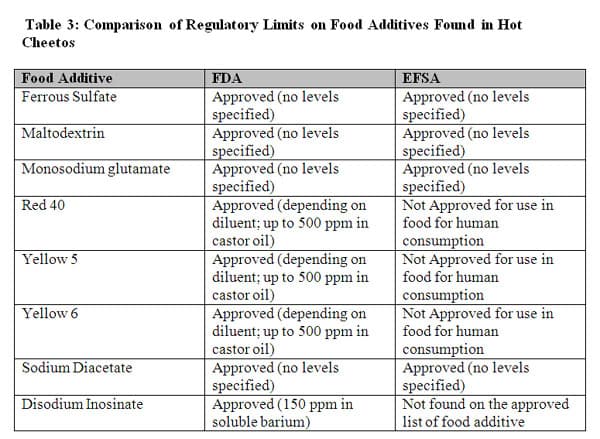Background Information for Teachers
How Foods Can Be Processed (Processing of Foods)
Food processing began with American colonists, who used to rely on various food preservation methods to be able to eat fruits and vegetables out of season. These often included drying (using the sun, air, heat, or vacuums to take out moisture to prevent mold, bacteria, and yeast growth), salting (brining foods to slow mold, bacteria, and yeast growth), canning (packing, sealing, then heating food to sterilization temperatures in a container), pasteurization (heating liquids such as milk to reduce disease-causing bacteria), and refrigeration (keeping foods at low temperatures to slow or prevent bacterial, mold, and yeast growth). Today, processing methods help foods keep the nutritional value loss at a minimum. Examples of commonly processed foods and techniques used to preserve these are raisins and beef jerky (drying), ham and pickles (salting), canned fruit and ketchup (canning), milk (pasteurization), and lettuce (refrigeration).
Chemical additives, purposes, and health effects
While food processing has preservation benefits, these methods also have drawbacks. Certain processing methods lower the nutrient density of the foods. For example, food processing methods that utilize removing water from the food can have the effect of drawing out water soluble vitamins (e.g. B and C vitamins). In addition, fresh fruits and vegetables lose their nutrients over time, so refrigeration methods can have the effect of lowering the nutrient density of the food over time (and also the flavor), though the calories will be similar. Therefore, the food is considered to be full of empty calories (calories that do not include essential vitamins, minerals, and nutrients that your body needs). To combat the loss of flavor that preservation methods cause, food manufacturers often add chemical additives. For example, hydrogenated fats (trans-fats) are commonly found in margarine, peanut butter, and shortening. Trans-fats help give foods a longer shelf life by altering a product chemically to make a food originally found as a liquid in to a solid. However, this preservative is known to increase LDL cholesterol (bad cholesterol as it is known due to the increase in risk for heart disease) and decrease HDL (good cholesterol). Sodium compounds also have the effect of preserving foods and adding flavor, but can contribute to high blood pressure. Nitrites are also added to prevent bacterial growth in foods such as hot dogs and salami, but these chemicals are also associated with increased cancer risk. Some dyes are added to foods solely to make the food products look more attractive; these include Red 40 (found in M&M candies) and Yellow 5 (found in Dorritos), but these dyes are also associated with cancer. These are just some of the negative effects that processed foods can cause on human health.
Ingredients in Hot Cheetos (note the majority of chemical additives)
The ingredients list of Flamin' Hot Cheetos includes several chemical additives 22. The definitions and known health effects for specific chosen ingredients are discussed below.
Enriched corn meal
Corn meal is a coarse flour product from corn that is grounded to different consistencies. Depending on the way it is processed (whole versus milled, whole being the healthier option), it can contain varying amounts of beneficial nutrients. Vitamins such as niacin, thiamine, riboflavin, pantothenic acid, folate and vitamins B-6, E and K can be found in corn meal. Minerals that can be found in corn meal include iron, magnesium, phosphorus, potassium, zinc, copper, manganese, and selenium. It has a medium load on the glycemic index (GI). The glycemic index is based on a scale of 0 to 100; each food is scored based on the rate at which is raises blood sugar level after eating. Diets with foods containing low glycemic indices are good for people with Type 1 and 2 diabetes because they can improve glucose and lipid levels, reducing insulin and insulin resistance 23. Cornmeal has a GI score of 69. One serving of cornmeal is a quarter of a cup, which has 10% total carbohydrates (32 g) and 6% of the daily recommended value of dietary fiber (2 g). It also includes 3 g of protein and 0.5 g total fat 24.
Ferrous sulfate is an additive that improves iron levels in the blood. Iron helps hemoglobin found in blood to carry oxygen to body tissues. Ferrous sulfate is good for people with anemia, but can be harmful for people with iron overload syndrome, hemolytic anemia (lowered red blood cells), porphyria (a genetic disorder that effects the skin or nervous system), thalassemia (a disorder of red blood cells caused by genetics), alcoholics, or people who receive blood transfusions on a regular basis. Ingesting too much ferrous sulfate can cause nausea, severe stomach pain, bloody diarrhea, shallow breathing, pale skin, blue lips, and seizures 25. The food label of Flamin' Hot Cheetos claims that each serving contains 2% of the daily recommended value of iron, and an analysis of the ingredients indicate that the source of this iron comes from ferrous sulfate used to enrich the corn meal. In a clinical laboratory study, patients given a 100 mg supplement of ferrous sulfate showed increased free-radical levels in fecal material 26. Another study, this time on rats, showed that ferrous sulfate absorption varied significantly according to the acidity of the diet 27. The main concern for students consuming too much ferrous sulfate would be constipation, darkened or green stools, diarrhea, nausea, and upset stomach.
Oils
The vegetable oils that can be found in Hot Cheetos include corn oil, soybean oil, and sunflower oil. Corn oil is a polyunsaturated vegetable oil that is steamed, milled, and sifted to separate the germ from the starchy endosperm. Then it is heated and pressed, and this process gives the oil its texture. Due to the prevalence of genetically modified corn, there is a high probability that the corn oil used by Frito-Lay comes from genetically modified corn. A recent study found a positive relationship (depending on consumption level) of genetically modified corn and the toxicity of the liver, kidneys, and spleen of rats 28.
Flamin' Hot Seasoning
Maltodextrin is a sweetener derived from treating starch from corn or potatoes with enzymes, alkali or acid. It is most likely used in Cheetos as a thickening or flavoring agent. Because it is high in calories, it can increase blood cholesterol levels (1 cup of maltodextrin contains 190 calories and 49 g of carbohydrates); this has the effect of increasing LDL cholesterol, or the "bad" type. If taken in excess, this can lead to cardiovascular diseases such as hypertension, heart attack, or stroke. In addition, increased consumption of maltodextrin upsets the balance of insulin and glucagon (hormones that regulate blood sugar levels), which can lead to hypoglycemia (which can cause dizziness, fatigue, headache, confusion, seizures, coma, and eventually death) 29.
Monosodium glutamate (MSG) is a flavor enhancer that is a form of the amino acid glutamic acid. It has been linked to weight gain. Overconsumption can cause MSG related syndrome (also known as Chinese restaurant syndrome), which includes symptoms such as numbness of chest, back, and neck, worsening of asthma, tingling or burning sensations, heart palpitations, anxiety, frequent urination, thirst, excessive urination and thirst, migraines, depression, and stomach ache or vomiting 30.
The food coloring used in Flamin' Hot Cheetos is of particular concern, as the popular food dyes in this snack are allowed in the United States by the Food and Drug Administration, but are banned in other countries due to effects on health. Red 40 Lake (the "lake" term indicating that it is a water-soluble dye that contains more than 85% pure dye and is stable when exposed to heat, and is easily incorporated into products in its dry state) was approved for food use in 1971. However, it is currently banned in the United Kingdom, Switzerland, Sweden, The Netherlands, and other countries of the European Economic Community due to its links with behavioral problems in children 31. Yellow 5, also known as tartrazine, is known to cause allergic reactions and is linked to the induction of asthma and the immune response. When ingesting Yellow 5, some people may experience itching, hives, and tissue swelling. Yellow 6 is also known to cause allergic reactions. In a study involving rats and a high level of consumption of this dye, the rats developed lesions on their kidneys, which may explain the ban of Yellow 6 in some countries 32.
Other additives
Sodium diacetate is used as an antifungal agent and helps to retard mold growth in cheese and bread as well as bacteria. Because skin contact is necessary for ingestion of Cheetos, it should be noted that, while the EPA lists the consumption of sodium diacetate as safe 33, it is a known skin irritant than may result in inflammation (itching, scaling, reddening, or blistering) and an eye irritant (redness, watering, or itching). It is considered very hazardous in the case of skin contact 34.
Disodium inosinate is a flavor enhancer that is a sodium salt from a phosphoric acid. It decreases the cooking time of food and can serve as a leavening agent that has the added benefit of slowing bacterial growth. It is a known irritant to the respiratory tract, inducing coughing and shortness of breath. Ingestion can cause vomiting, diarrhea, lethargy, heart disturbances, blood chemistry effects and central nervous system effects, as well as calcium depletion. It is also known to irritate the skin and eyes 35.
The Transition from Corn to Flamin' Hot Cheetos
Corn is cereal grain that is high in carbohydrates. The life cycle of a typical corn on the cob starts with a seed, which comes from a kernel on an ear of corn. Sadly, it is most likely a genetically modified seed from Monsanto, ConAgra Foods, or Syngenta. Corn seed is usually planted in the spring by a machine called a row planter, and often accompanied with weed killer chemical spray. When the corn eventually grows tall and the corn silk turns from a light yellow to dark brown, the corn is ready to be picked. A machine harvester will remove the corn husks from the plant. The corn is then packaged and purchased by a produce broker to be sold at the store. The corn travels usually by diesel truck to the grocery store.
After being picked from a farm, corn is turned in to corn meal by cleaning, drying, then grinding corn kernels with oil to make it in to a paste. This paste is checked for moisture, temperature, and coarseness. Then, cornmeal is shipped by freight cars to silos at a Frito-Lay plant. When ready, water is added to the cornmeal and then it is heated under pressure and pushed through a hole to make a cylinder shape. When this mixture comes in to contact with air, it fills with air and takes the cheese puff shape. An oven dries the cheese puff and while it is drying, it is coated with oil and then seasoned with cheese powder. These cheese puffs are then baked or fried, depending on the snack. It is then packaged in plastic (with nitrogen blown in the bag to keep the chips fresher longer) and then inserted in cardboard boxes before being shipped to stores via diesel trucks.
What Constitutes Junk Food
There are several groups that are hoping to define a healthy snack versus an unhealthy snack. The California After School Resource Center has defined a healthy snack as one that is low in saturated fat, added sugars and sodium, yet high in vitamin and fiber. It can include foods such as fruits and vegetables, whole grains, beans, nuts, and low fat dairy products. It is suggested that each snack follows the 35/10/35 rule, which proposes that 35% or less of the total calories of that snack come from fat, 10% or less from saturated fat, 35% or less added sugar by total mass of the product 36. It is also recommended that the snack contains 250 total calories or less. There are some foods and beverages that are exempt from this rule, including eggs, individually packaged cheese, nuts, seeds, and dried fruits and vegetables, and 2% skim milk, non-dairy milk, and fruit and vegetable juices comprised of at least 50% juice without added sweeteners.
The New Haven Healthy Store Initiative, along with Yale's Community Alliance for Research and Engagement (CARE) and the New Haven Health Department, have established clearer, stricter standards for what constitutes a healthy snack. These are as follows 37:


*According to the package, 1 serving size is 28 g, or 21 pieces of Cheetos. Serving sizes are estimates of what an average person eats in one sitting, but there is often more than one serving size in a typical $0.99 bag of chips. Therefore, the numbers above are normalized to the nutritional value of the equivalent of 1 serving size of corn.
**Based on information from the Food Standards Agency UK FSA Nutrient and Food Based Guidelines for UK Institutions 38
Comparison of Food Additive Standards in the United States Versus the European Union
There are different regulations that determine whether a food additive is safe, based upon parameters set by the government. There are two agencies that publish a Code of Federal Regulations for every chemical that is involved with food: the FDA and the EPA. The Food and Drug Administration (FDA) of the United States sets food additive regulations that food corporations must follow in order to market a product. In considering the safety of a food additive, the FDA analyzes the composition and properties of the additive, the typical consumption amount, any immediate and long-term health effects, and different safety factors 39. The Environmental Protection Agency (EPA) dictates and tests for the use of pesticides in the United States. The European Union has also established an agency called the European Food Safety Administration (EFSA), which has the same role as the FDA and EPA, but historically has stricter testing standards and therefore approves less food additives than the United States. The requirements for approval of a food additive for the EFSA reads: "Food additives must be safe when used, there must be a technological necessity for their use, their use must not mislead the consumer and their use must bring a benefit to the consumer 40." Below is a table that compares the food additives that are allowed in the United States versus the European Union that are found in Flamin' Hot Cheetos.

The approval by the FDA of the color additives Red 40, Yellow 5, and Yellow 6 for use in food for human consumption versus the EFSA disapproval brings into question whether or not these additives are actually safe for human consumption, and whether the standard for proof of food safety is high enough in the U.S. The EFSA seems to be more precautionary in their risk assessment. When comparing the published reports of the EPA versus the EFSA, it appears that the United States requires a quantitative risk assessment in units of excess damage. For example, the FDA allows Red 40 to be used at specific levels depending on food and diluent type despite numerous bulletins concerning its safety from other countries which can be searched for and found on the FDA's own website.
A Healthy Alternative to the American Diet
Studies show that there are health benefits to altering the typical American diet to a Mediterranean diet. The Mediterranean diet is easier to adhere to than other plant-based diets and still shows the health benefits of other whole-foods, plant-based diets 41. This could be due to incorporating olive oil as the primary source of lipids, but also, the diet emphasizes daily consumption of a high amount of fruits and vegetables, unrefined cereals and legumes, moderate consumption of fish and dairy products, and a less frequent intake of red meat, refined grains, and sweets. The chart below summarizes the difference between a typical American diet and a Mediterranean diet.

As one can see, the Mediterranean diet does not cut fats out drastically as compared to the traditional American diet, but the fat type varies considerably. There is a low level of saturated fats and a high level of monounsaturated fats, which is from the olive oil prevalence in the Mediterranean diet (mainly oleic acid). The saturated fatty acids from a typical Mediterranean diet come from cheese and yogurt from goat and sheep milk, as compared with the American source of saturated fatty acids from cow's milk and meat. Goat and sheep milk is primarily medium chain fatty acids, which do not negatively affect plasma cholesterol levels as longer chain fatty acids. Most of the cheese that Greek people consume is feta, which is derived from ewe's and goat's milk. This could account for the lower prevalence of cardiovascular disease when following a Mediterranean diet.

Comments: